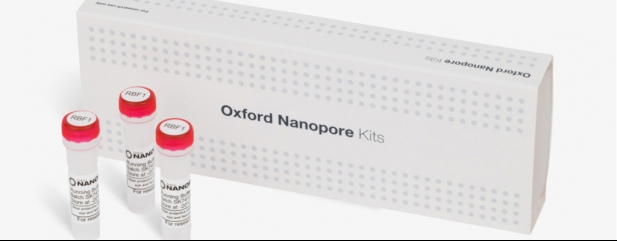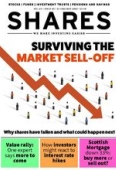Archived article
Please note that tax, investment, pension and ISA rules can change and the information and any views contained in this article may now be inaccurate.
Oxford Nanopore takes aim at market leader Illumina

Originally backed by fallen star fund manager Neil Woodford, Oxford Nanopore (ONT) listed on the stock market in September 2021 at 425p per share, giving it a market capitalisation of around £3.4 billion. Despite a recent wobble the shares are up more than a quarter on their issue price to 542p.
The market value of the shares is in excess of 30 times 2021 expected revenue and the company is not expected to turn a profit until 2025 at the earliest. It’s natural to ask why investors have placed such a punchy valuation on the business. What is all the fuss about?
According to Numis, Oxford Nanopore is the most advanced nanopore technology company, having developed the cheapest and most scalable DNA sequencing technology, allowing real-time analysis of genes, the building blocks of life.
The company operates in a structural growth market worth around $20 billion with some estimates suggesting a potential addressable market much higher.
The company has developed third generation gene sequencing technology and is effectively playing the role of ‘David’ against dominant US ‘Goliath’ Illumina which commands around 70% market share of the global DNA sequencing market.
THE BIG PICTURE
Ageing populations and spiralling healthcare costs threaten to bankrupt global healthcare systems. One way to reduce the pressures and increase quality of life is to find diseases earlier which results in better patient outcomes and cheaper overall costs.
Over the last few decades there has been an explosion of research into the study of genes, proteins and human metabolic systems to garner a greater understanding of the causes of disease.
The study of genes, known as genomics, is key to developing the holy grail: precision or personalised medicine where everyone has access to the data of life.
Historically sequencing the human genome has been very expensive. The Human Genome Project which sequenced the first human genome in 2003 cost around $3 billion. Today, the cost of sequencing the human genome has dramatically reduced to under $1,000.
NEW KID ON THE BLOCK
Technology improvements have led to falling sequencing costs which in turn has driven demand for ever greater amounts of data. Illumina has built bigger and more expensive machines to meet that demand. For example, its high-end NovaSeq 6000 costs $985,000 and weighs 481 kilos.
Illumina’s success is based on technology which grew out of Cambridge University in the 1990s called SBS (sequencing by synthesis). Illumina purchased UK company Solexa in 2007 which commercialised the technology. The vast majority (90%) of the world’s sequencing data has been produced with SBS technology.
Sequencing by synthesis is seen as the equivalent of the mainframes used in the computer industry before the PC and smartphone revolution. SBS is batch based and takes a long time.
Oxford Nanopore has developed the smartphone equivalent of gene sequencing devices and released the world’s first commercial range of nanopore-based DNA sequencing devices called MinIONs in 2015.
The MinION is small and portable and weighs just 90 grammes and costs $1,000. It can read long strings of DNA and provide real-time sequencing data.
The company has a long-term aim of reducing the cost to below $100 and ultimately plans to introduce a sequencing device which can be used with a smartphone instead of a PC.
A HUGE MARKET
There are more than one million scientists working in more than 100,000 laboratories worldwide that consume life science research tools, helping to drive the healthcare market’s big data projects and furthering the science of genomics and proteomics (large scale study of proteins).
The sequencing products market which covers instruments and consumables was worth around $6 billion in 2021 according to a report by consultants DeciBio.
The market is expected to grow to $8.5 billion by 2025 and as sequencing makes a bigger impact on healthcare, the potential addressable markets are expected to expand significantly over the long term.
For example, cancer treatments are the fastest growing therapy in biopharma and Oxford Nanopore and Health Advances have estimated that the potential opportunity in cancer is north of $100 billion, which, while large, is a fraction of the current market for cancer drugs.
A COMPETITIVE MARKET
Oxford Nanopore’s strategy is to lower the barriers to adoption of its technology by providing a range of kits which simplify preparation time and lead to greater experimental success.
The company generates revenue by selling consumables while the devices are provided free of charge. It has developed a range of devices which run the full gamut in terms of size and throughput capacity.
Oxford Nanopore has developed an e-commerce platform which supports self-service customers and a ‘price stratified’ pricing structure which effectively makes the technology available to a broad spectrum of scientists.
Market leader Ilumina charges upfront for its devices and requires clients to purchase minimum quantities of consumables over the contract term. This can run into millions of dollars.
Oxford Nanopore has a roadmap which aims to develop increasingly cheap and portable sequencing nanopore chips with the long-term goal of democratising access to DNA information.
Despite cost and flexibility advantages, displacing Illumina will not be an easy challenge. Switching costs are high and Illumina has an established installed base and economies of scale advantages.
However, Oxford Nanopore has built up an impressive intellectual property portfolio with more than 2,000 patents which it has defended successfully over the last five years.
The company is hoping that as more scientists, government and pharmaceutical companies use its products, their greater speed, flexibility and lower cost will drive market share gains.
Illumina and Swiss pharmaceutical giant Roche have indicated they are developing their own nanopore technologies.
Numis reckon that US listed Pacific Biosciences is the closest peer to Oxford Nanopore with genomics company 10X Genomics also sharing similar characteristics.
While Oxford Nanopore has built an impressive business and has the potential to disrupt a fast-growing market, Illumina is the clear market leader, making it a formidable competitor.
Meanwhile, other smaller competitors could make life difficult for Oxford Nanopore and there is always execution risk when dealing in technology.
What is nanopore sequencing?
Oxford Nanopore’s technology is based on high speed electronics rather than optics and produces rapid detection of molecules without the need for chemicals. Moreover, the technology enables the measurement of a range of DNA strings in real time.
The bioelectronic-based sensing technology is based on nanopores, which are tiny holes embedded in a microchip. A nanometre is one billionth of a metre.
It works by monitoring changes to an electric current as nucleic acids are passed through a protein nanopore. This method is currently the cheapest way to sequence DNA.
The company’s high-end throughput PromethION machine reduces sequencing cost to roughly $3.1 per gigabyte of data which compares with Illumina’s roughly $6 per gigabyte while Oxford Nanopore’s solution is available at a much lower overall capital cost.
Important information:
These articles are provided by Shares magazine which is published by AJ Bell Media, a part of AJ Bell. Shares is not written by AJ Bell.
Shares is provided for your general information and use and is not a personal recommendation to invest. It is not intended to be relied upon by you in making or not making any investment decisions. The investments referred to in these articles will not be suitable for all investors. If in doubt please seek appropriate independent financial advice.
Investors acting on the information in these articles do so at their own risk and AJ Bell Media and its staff do not accept liability for losses suffered by investors as a result of their investment decisions.

 magazine
magazine










